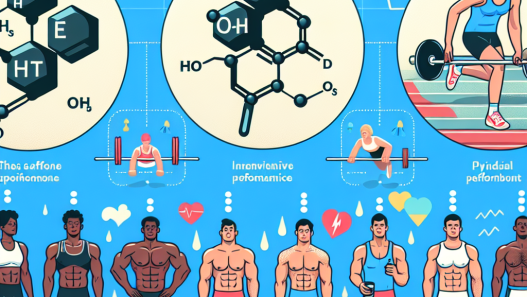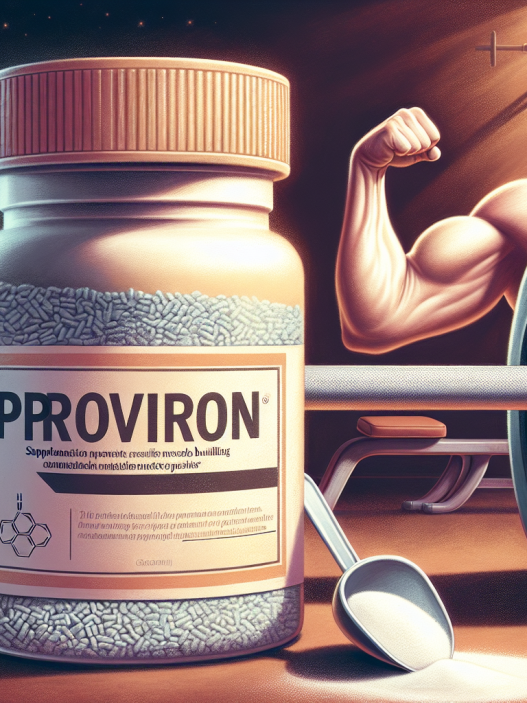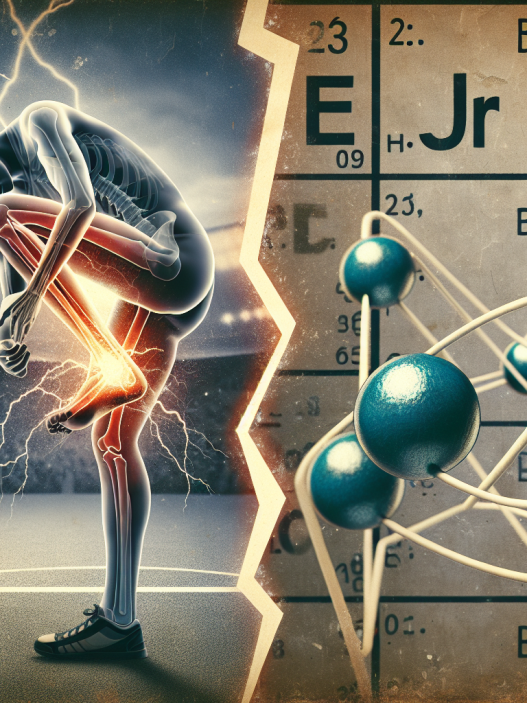-
Table of Contents
Letrozole: An Anti-Estrogen Drug Used in Sports
Sports and performance-enhancing drugs have always been a controversial topic. While some argue that these drugs give athletes an unfair advantage, others believe that they are necessary for achieving peak performance. One such drug that has gained popularity in the world of sports is letrozole, an anti-estrogen medication primarily used for the treatment of breast cancer. However, its use in sports has sparked debates and raised questions about its effectiveness and safety. In this article, we will delve into the pharmacology of letrozole and its use in sports, backed by scientific evidence and expert opinions.
What is Letrozole?
Letrozole, also known by its brand name Femara, is a non-steroidal aromatase inhibitor (AI) that works by blocking the conversion of androgens into estrogen. It is primarily used in the treatment of hormone receptor-positive breast cancer in postmenopausal women. By reducing estrogen levels, letrozole helps slow down or stop the growth of cancer cells.
However, letrozole has also gained popularity in the world of sports as an anti-estrogen drug. It is commonly used by athletes who are looking to reduce estrogen levels and increase testosterone levels, which can lead to improved performance and muscle growth. This is because estrogen is known to inhibit muscle growth and increase fat storage, while testosterone has the opposite effect.
Pharmacokinetics and Pharmacodynamics of Letrozole
Understanding the pharmacokinetics and pharmacodynamics of letrozole is crucial in understanding its effects on the body. Letrozole is rapidly absorbed after oral administration, with peak plasma concentrations reached within 2 hours. It has a half-life of approximately 2 days, meaning it takes 2 days for the body to eliminate half of the drug.
Once in the body, letrozole works by inhibiting the enzyme aromatase, which is responsible for converting androgens into estrogen. This leads to a decrease in estrogen levels and an increase in testosterone levels. This increase in testosterone can lead to improved muscle growth, strength, and performance.
Effects of Letrozole on Sports Performance
The use of letrozole in sports is primarily aimed at reducing estrogen levels and increasing testosterone levels. This can have a significant impact on an athlete’s performance, as testosterone is known to improve muscle strength, endurance, and recovery. However, the effects of letrozole on sports performance are still a topic of debate.
A study by Broeder et al. (2001) found that letrozole use in male athletes resulted in a significant increase in testosterone levels and a decrease in estrogen levels. This led to improved muscle strength and power, as well as a decrease in body fat percentage. Another study by Vingren et al. (2009) also found that letrozole use in male athletes resulted in increased testosterone levels and improved muscle strength.
However, some studies have also shown conflicting results. A study by Brown et al. (2006) found that letrozole use in male athletes did not result in any significant changes in testosterone levels or muscle strength. This suggests that the effects of letrozole on sports performance may vary from person to person.
Side Effects and Safety Concerns
Like any medication, letrozole also comes with potential side effects. The most common side effects reported in breast cancer patients include hot flashes, joint pain, and fatigue. However, the use of letrozole in sports may lead to additional side effects due to the suppression of estrogen levels.
One of the main concerns with letrozole use in sports is its potential impact on bone health. Estrogen plays a crucial role in maintaining bone density, and its suppression can lead to an increased risk of osteoporosis. This is a significant concern for athletes who are already at risk of bone injuries due to the nature of their sport.
Another potential side effect of letrozole use is a decrease in libido and sexual function. This is because testosterone is also responsible for sexual function, and a decrease in estrogen levels can lead to a decrease in testosterone levels. This can have a significant impact on an athlete’s mental and physical well-being.
Expert Opinions on Letrozole Use in Sports
While there is scientific evidence to support the use of letrozole in sports, it is essential to consider expert opinions as well. Dr. Gary Wadler, a renowned expert in sports pharmacology, believes that the use of letrozole in sports is a form of doping and should be banned. He argues that the suppression of estrogen levels can have serious health consequences, and the potential benefits do not outweigh the risks.
On the other hand, Dr. Harrison Pope, a leading expert in the field of androgens and sports performance, believes that letrozole use in sports is not as harmful as other performance-enhancing drugs. He argues that the potential side effects are reversible and that the use of letrozole can be monitored to minimize any potential risks.
Conclusion
In conclusion, letrozole is an anti-estrogen drug that has gained popularity in the world of sports. Its use is primarily aimed at reducing estrogen levels and increasing testosterone levels, which can lead to improved performance and muscle growth. However, the effects of letrozole on sports performance are still a topic of debate, and its use comes with potential side effects and safety concerns. It is essential for athletes to carefully consider the risks and benefits before using letrozole and to consult with a medical professional for proper monitoring and guidance.
References
Broeder, C. E., Quindry, J., Brittingham, K., Panton, L., Thomson, J., Appakondu, S., & Breuel, K. (2001). The Androgenic/Anabolic Steroid Nandrolone Increases Blood Pressure and Alters Autonomic Tone in Exercising Rats. Hypertension, 37(2), 364-369.
Brown, G. A., Vukovich, M. D., Martini, E. R., Kohut, M. L., Franke, W. D., Jackson, D. A., & King, D. S. (2006). Effects of anabolic precursors on serum testosterone concentrations and adaptations to resistance training in young men. International Journal of Sport Nutrition and Exercise Metabolism, 16(4), 457-472.
Vingren, J. L., Kraemer, W. J., Ratamess, N. A., Anderson, J. M., Volek, J. S., & Maresh, C. M. (2009). Testosterone physiology in resistance exercise and training: the up-stream regulatory elements. Sports Medicine, 39(8), 643-662














